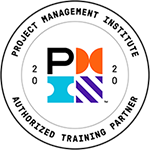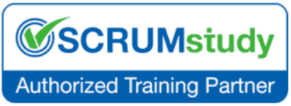APICS - Certified Supply Chain Certification Prep
Course No. 237
The APICS Certified Supply Chain Professional (CSCP) program is the first and only supply chain certification that encompasses the end-to-end global supply chain (GSC), providing participants with the skills to effectively manage those activities that involve suppliers, plants, distributors, and customers located around the world. This course is designed to prepare attendees for APICS CSCP certification and covers all the required areas of the body of knowledge, as specified by APICS. Attendees will enhance their supply chain competency, enabling both professionals and employers by keeping organizations more competitive in today’s economy.
Course Benefits
Student will be able to examine and execute supply chain-related processes including forecasting, demand management, scheduling, master planning, supplier certification, communications, and managing customer expectations.
1. Upon completion of the course, students will be able to:
2. Assess internal operations for:
3. Inventory Management
4. Logistic management
5. Supply chain risk
6. Develop optimization plan
7. Apply GS strategies for products and services to benefit the use of global suppliers
8. Evaluate GS network and develop an improvement plan
9. Analyze demand forecast and measure supply chain performance for optimum capacity and capability
10. Identify risk throughout the supply chain
11. Evaluate options to minimize risk
12. Develop appropriate mitigation plans
13. Help your company reach its ideal supply chain state
14. Use data to link production, distribution, purchasing and service
15. Reduce waste in supply chains
16. Identify and classify supply chain risk and develop risk response plans
17. Improve communications throughout the supply chain
Prerequisites:
None for the course. Technology or Equipment Required Access to use of computer and internet. All courses are instructor-driven and provided via online or in-person. Certification Requirements To attain a certificate, attendees must pass the written examination, (earn a passing grade) in course assessments, and meet all prescribed professional requirements of attendance, participation, homework and learning objectives. Projects, class activities, workshop and brainstorming will be covered in the class. Homework is required. Candidates must meet ONE of the following requirements: Three years of supply chain experience Bachelor’s degree or in the international equivalent CPIM, CLTD (includes APICS Fellows), CTL, CIRM, SCOR-P, CPM, or CPSM designation
Duration:
Five Days; 35 Contact Hours
$2395 Includes materials, certificate of attendance. The material includes Book, CD with questions and materials.
Topics Covered:
Instructor:
The instructor will be a Certified CSCP with 15+ years’ experience in industry.
Who Should Attend?
Professionals who are looking to obtain the CSCP certification or enhancing knowledge in Supply Chain.
For More Information:
Contact the Training Administrator training@qpsinc.com, Phone: (508) 786-0777
Note:
This course is also available for training onsite. A discount is available when 6 or more attendees enroll
Business Solutions Providers for Quality, Productivity and Performance Excellence
Experts in Lean Six Sigma, Management System, Supply Chain, Project Management and Professional Development











